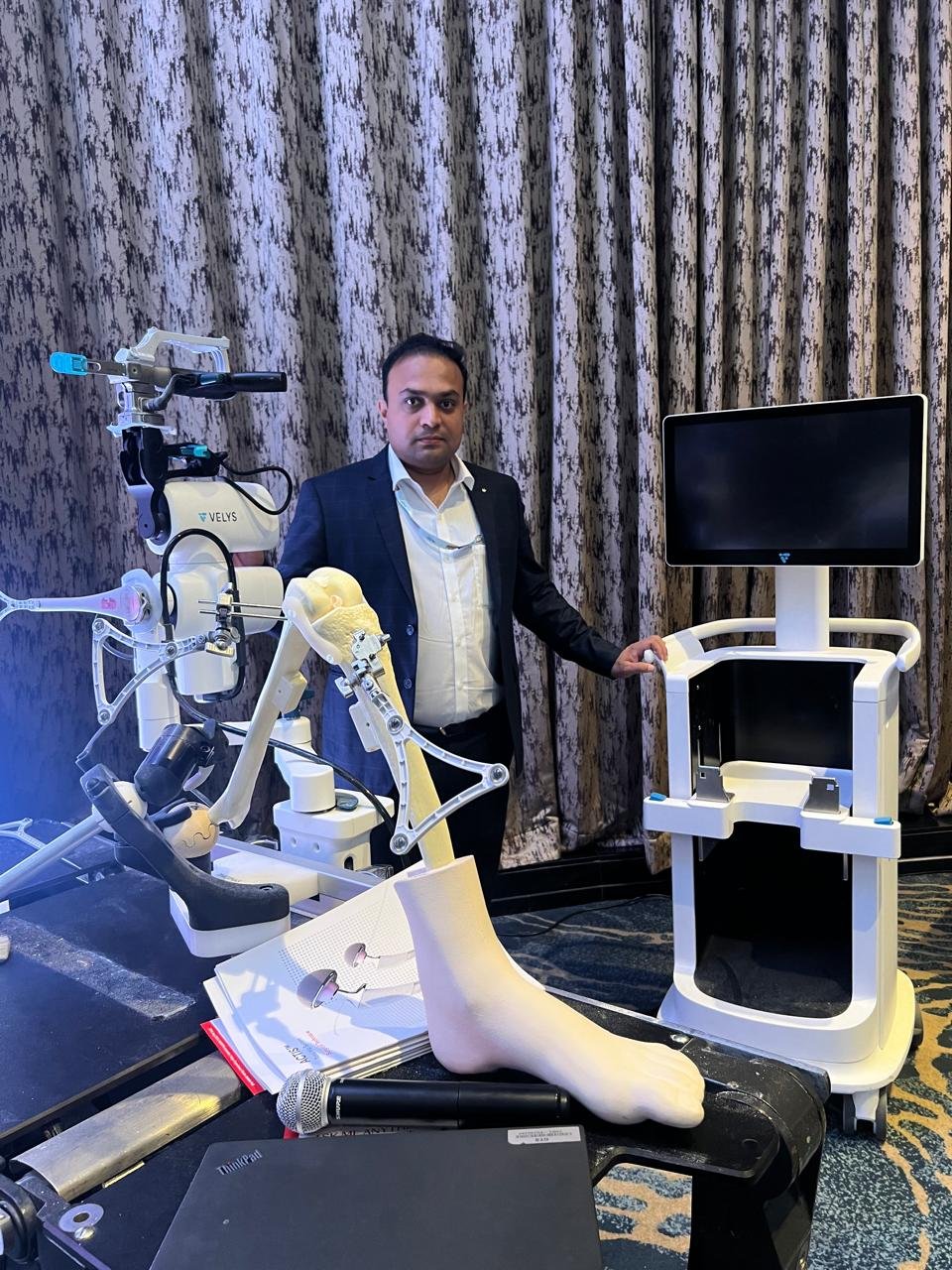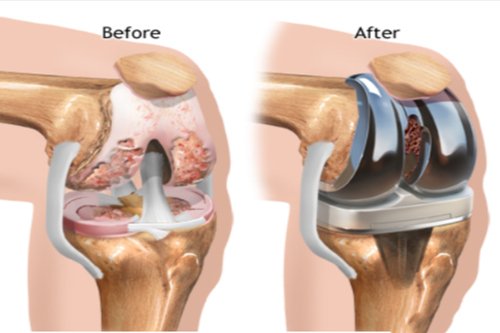Meet Our Doctor

Dr. Prajaktam M. Lende
ORTHOPAEDIC & JOINT REPLACEMENT SURGEON
Fellowships
- Navigation Based Joint Replacement Surgery (Hip & Knee Arthroplasty)
- Arthroscopy & Sport Medicine
- Ilizarove Surgery
- Observer Ship in Pediatric Orthopaedic Surgery (Wadia Hospital, Mumbai)
Knee replacement In Satna
Home / Knee replacement In Satna

Knee replacement In Satna, also known as knee arthroplasty, is a surgical procedure design .thus, to replace a damage or worn-out knee joint with an artificial implant. This procedure is commonly performe to alleviate chronic pain and improve function in individuals.once, with severe knee arthritis or other conditions that affect the knee joint.
Knee replacement surgery is a highly successful procedure that can significantly improve a person’s quality of life by relieving pain and restoring function. It is often considere when conservative treatments, such as medications and physical therapy, no longer provide sufficient relief from knee arthritis or other degenerative conditions. However, the decision to undergo knee replacement is made on an individual basis, taking into account factors like overall health, lifestyle, and the severity of the knee condition.
Best Knee replacement in Satna
Dr. Prajaktam Lende is a trusted Knee replacement Doctor in Satna. He has done MBBS, D.Ortho, FIIS, FIAS . He is currently associated with Orthopedic & Joint Replacement Center in Satna. Book an appointment with Dr. Prajaktam Lende .We will help you find the best Orthopedic Treatment in Satna.
What are the benefits of knee replacement surgery?
Knee arthroplasty stands as a secure and highly efficient procedure, facilitating individuals in reclaiming their mobility while alleviating persistent discomfort. A significant majority of those undergoing knee replacement experience diminished pain, enhanced knee function, and an overall better quality of life.
What happens during a knee replacement?
On the day of your surgery, anesthesia will be administered to ensure you remain pain-free throughout the procedure. An anesthesiologist will either induce general anesthesia, allowing you to sleep through the surgery, or provide regional anesthesia to numb the lower part of your body.
During knee replacement surgery, your surgeon will:
- Remove damaged cartilage and bone.
- Implant the prosthetic knee joint.
- Place a plastic spacer to mimic the smooth cushioning of your original cartilage.
- Reshape the patella (kneecap) to accommodate the new prosthetic knee joint if necessary.
What are complications of a knee replacement?
While knee replacement surgery often alleviates symptoms, some individuals may still encounter pain and other issues post-operation. Rare complications encompass blood clots, infections either within the knee or at the surgical site, nerve or blood vessel complications, prosthetic implant malfunctions such as premature wear or loosening, formation of scar tissue within the knee, and limitations in range of motion or stiffness.
Recovery from knee replacement can be more challenging for those with certain health conditions such as hemophilia, diabetes, or autoimmune disorders like lupus. It’s crucial to discuss your health history with your surgeon, who can provide insights into post-surgery expectations and strategies to mitigate complications.
Preoperative Preparation:
- Medical Evaluation:A comprehensive medical assessment is conducte to determine the patient’s overall health and fitness for surgery.Blood tests, imaging studies, and other diagnostic tests may be perform.
- Patient Education:Patients receive information about the knee replacement procedure, potential risks, and postoperative care. Preoperative exercises may be recommend to strengthen the muscles around the knee.
Surgical Procedure
Anesthesia: Knee replacement is typically performe under general anesthesia, although regional anesthesia options may be considere.
Incision: An incision is made to access the knee joint. The size and location of the incision may vary.
Resurfacing and Implant Placement: Damage cartilage and bone are remove from the knee joint, and the artificial knee components (femoral component, tibial component, and sometimes a patellar component) are securely implante.
Closure: The incision is close, and the surgical site is dress.
Postoperative Care
Hospital Stay: Most patients stay in the hospital for a few days, but this can vary.
Physical therapy begins shortly after surgery to aid in mobility and prevent complications.
Pain Management: Medications are prescribe to manage postoperative pain.
Prevention of Blood Clots: Blood thinners and compression stockings may be use to reduce the risk of blood clots.
Early Ambulation: Patients are encourage to start walking with the help of crutches or a walker soon after surgery.
Rehabilitation and Recovery
Physical Therapy: A structure physical therapy program helps improve joint flexibility, strength, and overall function.
Rehabilitation may continue on an outpatient basis.
Activity Modification: Patients are advise on movement restrictions and gradual return to daily activities.
Best AVN treatment In Satna
Dr. Prajaktam Lende is a trusted Orthopedic doctor In Satna. Top joint Replacement surgery Doctor in Satna. Book an Appointment with Dr Prajaktam M. Lende, one of the prominent orthopaedic surgeon specialised in Joint Replacement surgery and ligament Reconstruction surgery Dr Prajaktam M. Lende at Satna. He is currently associated with the Orthopedic & Joint …
